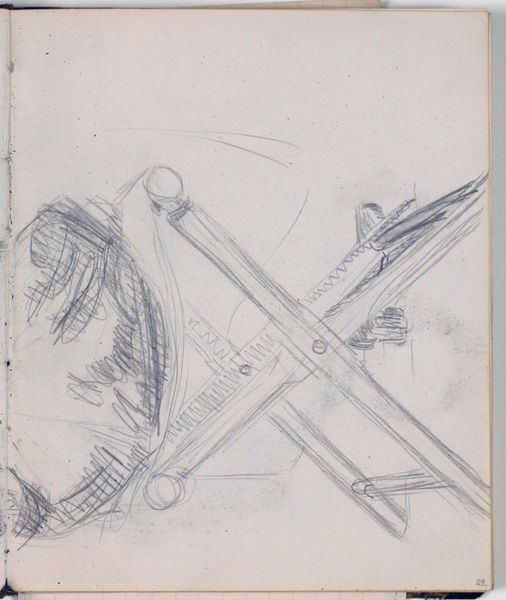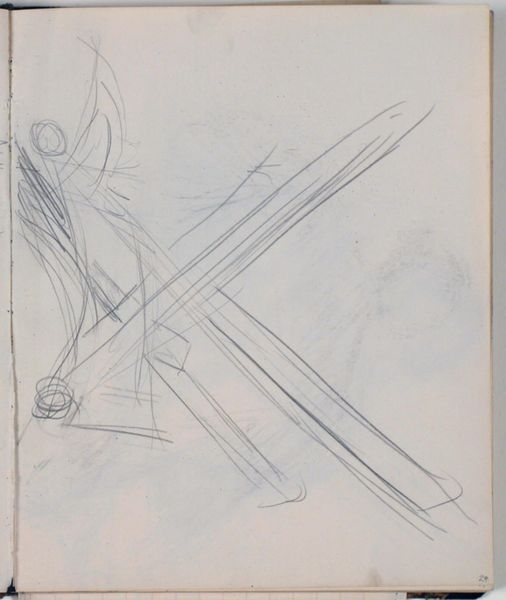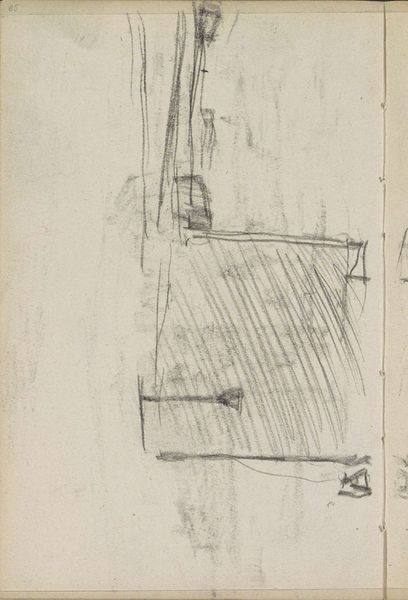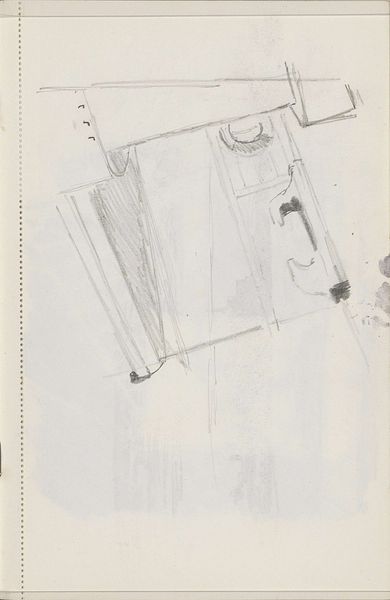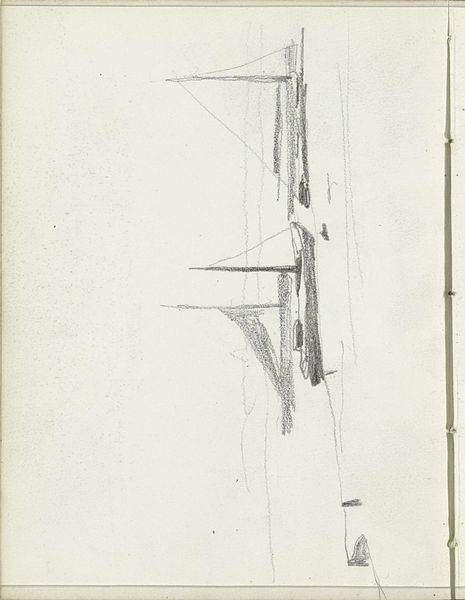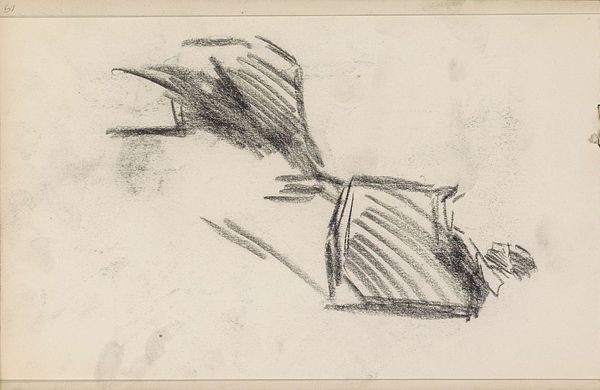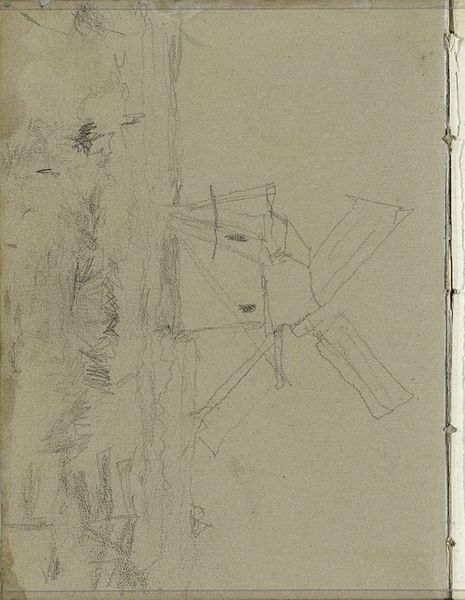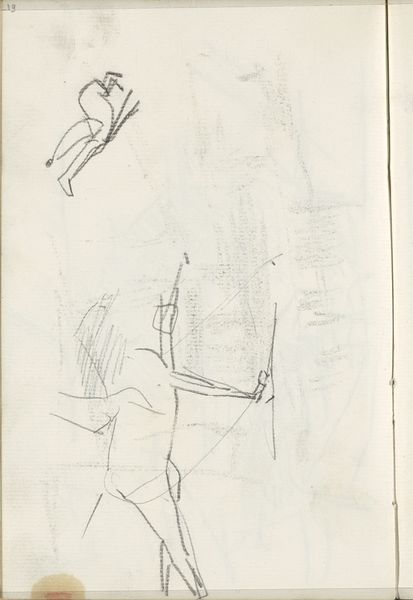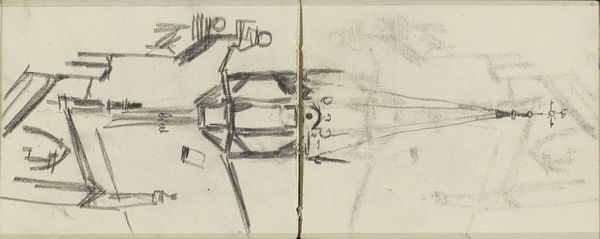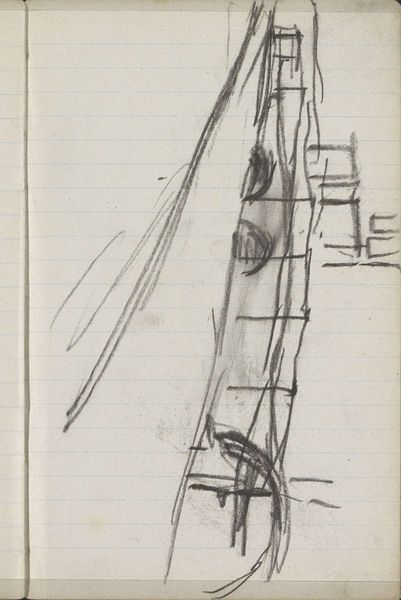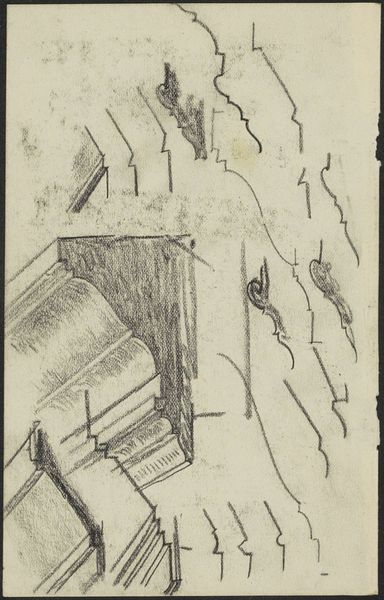
drawing, pencil
#
drawing
#
pencil sketch
#
form
#
geometric
#
pencil
Dimensions: 226 mm (height) x 185 mm (width) x 112 mm (depth) (monteringsmaal), 221 mm (height) x 184 mm (width) (bladmaal)
Curator: This pencil drawing by Niels Larsen Stevns, titled "Studie af rygvendt siddende figur," from around 1930-1936, presents us with… well, what’s your immediate reaction to it? Editor: Stark. I’m struck by how bare it feels, almost sterile in its geometric abstraction of the human form. It evokes a sense of detachment, doesn’t it? Curator: I find it fascinating to consider this drawing in relation to the broader scope of Stevns’s oeuvre. It’s an early exploration of form and could have been preparatory work, a practice he might abandon later on for more academic work. You can also imagine the kind of pencils he was using and why he made those decisions. Editor: And how might societal factors have informed such a stripped-down representation? Considering the interwar period, did Stevns intentionally turn away from idealized figures, perhaps as a commentary on the disillusionment following World War One? Or was it more a case of… what models were available? Curator: It could reflect both material conditions and deliberate aesthetic choices. A sketch like this reflects accessible, readily available material combined with Stevns’ unique perspective of the human form, without resorting to overt historical narratives. It also emphasizes economy—both of line and of the artist’s time. There’s little extravagance here. Editor: But doesn't this simplicity itself carry political weight? Stripping away ornamentation can be a powerful statement, refusing to participate in a visual culture complicit with the dominant powers. This sketch seems to push back and present a raw vision stripped of imposed ideals of how we view models now. Curator: I understand your interpretation. Yet, I am wondering about Stevns' daily experience when using different materials and the ways this would shift his technique depending on the tools he would use on any particular day. Editor: It also begs the question, what body is being drawn? Is it a study in objectification, or does the facelessness of the figure allow us to project our own experiences onto it, reclaiming some agency? Curator: It’s compelling to examine the interplay of form and accessibility. Thanks for pointing out such a complex view of this drawing. Editor: My pleasure. By acknowledging the intersections of art and the larger forces at work in society, perhaps we can begin to think critically.
Comments
No comments
Be the first to comment and join the conversation on the ultimate creative platform.
